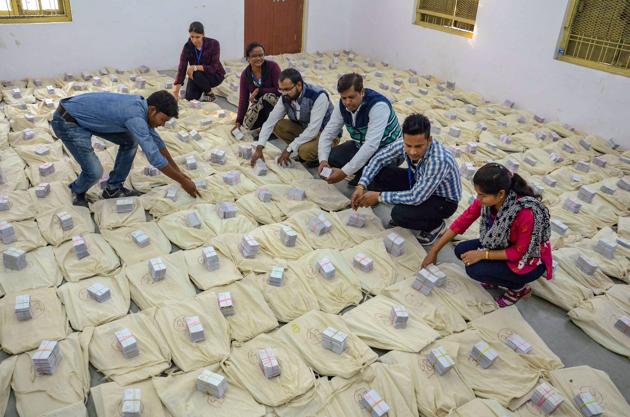The Election Commission can only be a neutral umpire
It has tried over long years to ban criminality from the electoral maidan, but that requires laws to be amended. Only Parliament can do that.
Political parties across the board have one mantra once elections are declared: winnability. During my years in the Election Commission, I asked many leaders why they gave tickets to contestants with criminal antecedents and did not prefer clean candidates. They would avoid my question or say they would be prepared to discuss it after elections were over.

According to the figures compiled by the Association of Democratic Reforms (ADR), the ongoing elections display the same trend. Criminality among candidates continues in the elections underway in five states. ADR has compiled figures for three. In Chhatisgarh, 130 candidates of 1079 face criminal cases, of whom 90 have been involved in heinous crimes. In Madhya Pradesh, 41% of recontesting Congress candidates and 71% of BJP face criminal cases. In Mizoram, 4% of the candidates have declared their criminal cases, of which half are for serious offences.
When I was CEC, in preparation for the 2009 general elections, the commission established a number of ‘non force’ steps to create a level playing field, and keep violence and intimidation at bay. Not all candidates belonged to established political parties that had electoral machines backing them. Independent candidates, too, required the protection of the commission.
These included a first time use of extensive videography. Whichever candidate, irrespective of party, pointed to polling stations where they harboured fears of intimidation or trouble, the commission reviewed the ground situation. If they were categorised as “sensitive”, we provided video cameras to record the entire polling process on polling day. Over 80,000 cameras were used during the five weeks of polling in 2009. Similarly, over 51,000 still cameras were also employed to photograph all those who entered ‘sensitive’ polling stations. This comprehensive record of events was used as evidence in the event of any election petition that was filed. The Returning Officers/ District Magistrates were made to ensure that all films or photographic evidence remained safe in their protective custody for six months after the election.
Nor was this all. We also devised a new strategy of placing ‘micro observers’ at ‘very sensitive’ polling stations, where candidates apprehended that there may be trouble. These micro observers were placed under the charge of senior Observers. It may be recalled that the Observers, senior officials of the rank of Joint secretary to the Government of India, were first deployed by TN Seshan. For the 2009 general elections, almost 2000 observers were posted on duty almost one month before election day. Micro-observers were junior government servants usually drawn from the state (but not from the districts where the elections were taking place). They were stationed at a single (or a small cluster) of booths, for the entire duration of polling day, where the commission apprehended that there may be violence or large scale impersonation or some other equally disturbing development. Observers are invariably drawn from other states and, therefore, have no local ties. We employed over 2000 observers and over 50000 micro-observers during the polls. If 2009 was deemed both nationally and internationally as a peaceful election, then these were some of the contributing factors.
Importantly, these measures undertaken continue to be maintained by the commission. Political parties and candidates alike are availing of them.
There was another ‘non-force’ option that had been tried and tested to good effect. In the commission, we called it “vulnerability mapping”. Its genesis was as follows. During the course of our preparations for the Assembly election in UP in 2007, our officials reported that there were several pockets of persons that were ‘unable’ to vote in earlier elections. We dispatched observers to find out why. The reason actually stared us in the face, but we had not recognised it. It was caused thus. The locality in question often belonged to scheduled caste dwellers. The polling station was often at the other end of the village or in another village. Since they had to walk through upper caste areas, they were often intimidated on the way. We prepared a survey in the run up to the Assembly election and found that about 25000 hamlets, or parts of them, were not casting their votes.
We had the two choices. The first was to relocate the existing polling station to a more central spot. But a shift required the approval of all in the fray. The second was to allow the poll station to remain, and instead create an “auxiliary” station on the doorstep of the “deprived” areas. This is what we did. Many families voted without fear for the first time in years. We perfected this. By the 2009 general elections, we put up over 100,000 auxiliary stations throughout the country. It created a quiet revolution.
The commission tries hard to level the playing field, by upholding the Model Code of Conduct as a fair umpire should. It has tried over long years to ban criminality from the electoral maidan, but that requires laws to be amended. Only Parliament can do that. Till that happens, the commission had been successful in outlawing erstwhile practices of booth capturing and violence.
Navin B Chawla is former chief election commissioner. His book ‘Every Vote Counts’ will be released in January 2019
The views expressed are personal






